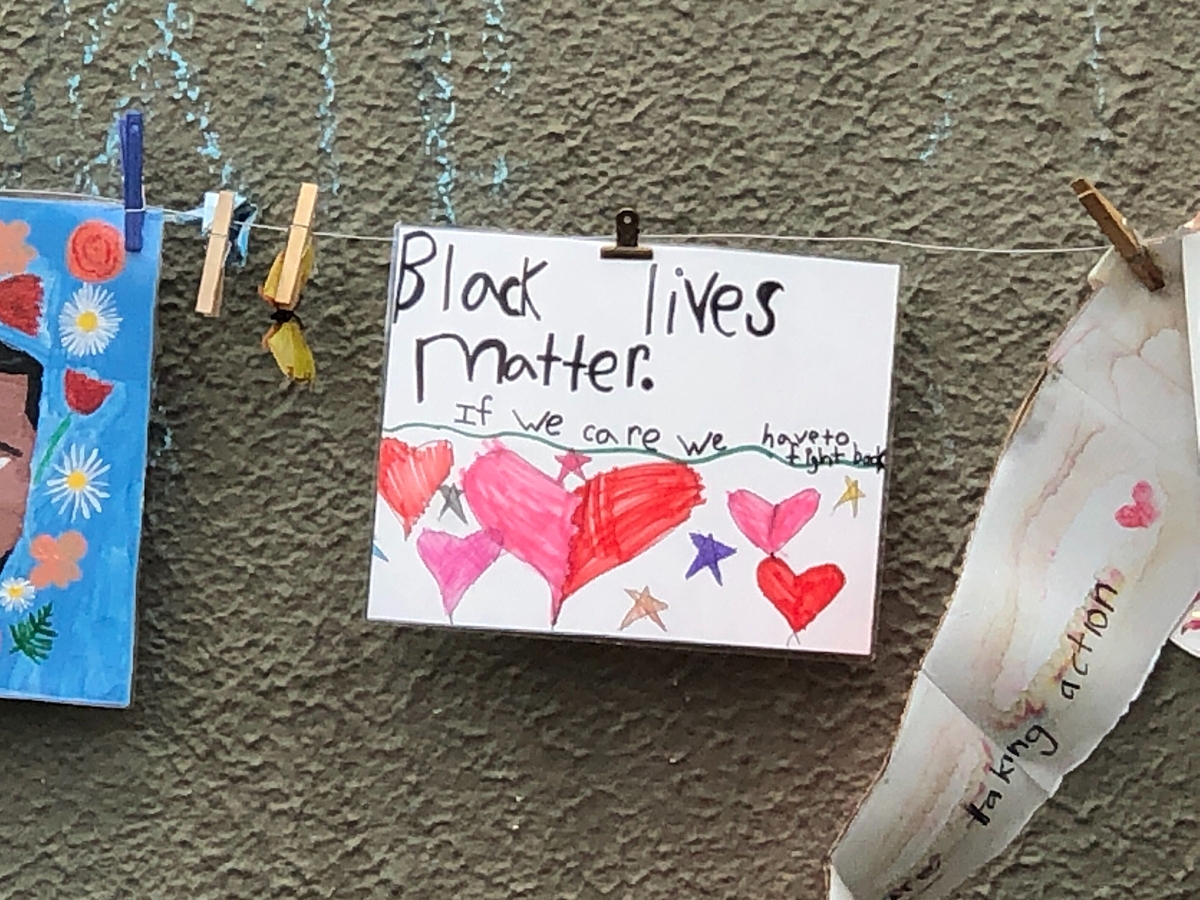
Ethical Tech
A Framework for More Ethical Innovation
Participating in ethical innovation is about fostering an internal framework that innovators, entrepreneurs, and leaders can bring to every product or business we create.
Author
Carey Jenkins, CEO Substantial
"We need tech optimists to shoot for the moon. But we also need those looking for problems." - Shira Ovide
After years of prioritizing rapid growth, technology companies are reckoning with the impacts their services are having on end-users’ lives and the world around them. It is hard to reflect on the last few years, or even the last few months, and ignore the role technology platforms play in our collective sense-making, our social relationships, our physical and mental health, and our politics and elections. We each carry a capacity to name the reality and bear the responsibility; and by doing so we push technology toward a more equitable, sustainable future.
Are technologists building products that are ruining the world?
Yes. But we don't have to.
Given what seems like a singular focus on exponential scale and massive valuations, we should all be concerned about an industry culture that is prioritizing speed and growth, while deprioritizing the lives of our end-users. We have taught a generation of technologists and leaders that the only outcome that matters is money.
Audiences are smarter and more conscious.
Even as solutions improve, trust is declining. Far more than they did five years ago, customers are weighing the implications of technology within their lives.
Fast Facts
Technology’s idea of consent is a fallacy.
Assuming the average person understands the implications of privacy policies, or service terms and conditions, is wishful thinking at best and willful disregard at worst. Binary consent is no longer an acceptable baseline for ensuring consumers understand the implications of their usage of digital products. Asking for explicit consent for implicit concepts is a bargain fraught with dark patterns. If we truly care about informed consent, we should be building transparency into every layer of the experience.
Ethics cannot be siloed in design.
Placing the burden of ethics on one department, role, or singular process ignores the realities of the decisions, both big and small, happening outside of the design process. Design is not a field immune from doing harm.
We cannot expect products to be inherently ethically designed just because we put it through the “process.” Design is both a skill and an approach, and capable of being deployed to serve any purpose. Many of the decisions that lead a product astray happen long before engaging the design team.
We learn ethics through practice.
Ethics is a practice; it is broader, deeper, and more demanding than legal compliance. This is why ethical mishaps are thornier, and frankly more damaging. They can happen in such tiny steps that we do not even know we are moving until the line we crossed is miles behind us.
Demanding more ethical innovation requires participation from technologists in every decision, product or business. We have both the individual agency and a collective responsibility to ensure ethical best practices are intrinsic to our decision making along every step of the process.
For entrepreneurs, leaders, and individual contributors creating digital platforms and products, I propose a set of questions to carry alongside you in every meeting and every decision point in the product life cycle.
“When we commit to asking better questions, we are capable of making better, smarter choices for our clients, employees, and end-users.Carey Jenkins
LEAD FROM WHY
If you are leading a company, department or team, and you are not starting with “Why” for every decision, you are doing a disservice to your team and their capacity to innovate.
Leaders need to adopt an ethically-integrative stance when tackling the decisions they make from the top, and consider the implications that trickle down to the day-to-day product decisions of your teams.
If any aspect of your product is hidden from the product creators or intended users, there is your clue that something is amiss.
- What is important, what do you value?
- Have you thought critically about your business objectives?
- Do they factor in humanity, community, society?
- Are you being transparent in intention with your teams, customers and users?
CHANGE THE OPERATING SYSTEM.
Consider how and what kind of accountability is present within your company and team structures. The environment in which your product is built contributes to the type of product created within that environment.
Does your company operating system foster or suppress ethical decision making? What kind of behavior do your star players engage in? Is a large percentage of compensation in equity or bonuses for hitting only revenue or growth?
What you incentivize will become the implicit mandate for individual decision making. What does your operating system tell your employees is most important?
- Are objectives and direction made top-down, far from daily decisions?
- What behavior or incentives are you encouraging?
- Does your org structure support accountability?
- Are departments and teams working in silos with competing priorities?
UNCOVER BIASES.
Uncovering cognitive biases and systemic patterns of oppression requires going beyond representation. Diversity in and of itself will not guarantee more ethical products, but it is very hard to create them without it. Homogenous teams reinforce confidence in our biases, and apathy towards our fallibility. Our cultural norms are as important as who is in the room. Diversity and dissent drive creativity. Encouraging critical thinking at every level requires a setting that values, not merely tolerates, respectful divergence; it is a setting in which people feel safe and heard.
- What are the cultural norms inhibiting diversity?
- How do you encourage divergent points of view?
- How is tension handled?
- What does collaboration look like?
- Who are the dominant speakers throughout innovation?
THINK IN SYSTEMS.
Products are not isolated; they function within complex ecosystems—along with the intended users groups, existing infrastructure, protocols and agents . Assume your ecosystem is complex and map it out. This is not a roadmap of features; this is a holistic consideration of the system in which your product lives and the implications your product has on it. Every system has a key - the entity on which all others depend. Have you objectively considered the relationship your product has to that key? Maybe your product will become the key - will that improve or worsen the system?
Speed, scale, acquisition and adoption cause imbalances and unexpected consequences. What happens if the key to your system changes?
- Do you fully understand the system your product is in?
- What is the key to the system?
- Does the product improve, change or eliminate parts of the system?
- How might your product change the system in unintended ways?
CREATE WITH FORESIGHT.
Future-thinking is an essential part of creating a product in an environment that is changing rapidly. Now that you have your system mapped out, you can apply trends and uncertainty to it. This is a mindset that recognizes there are things outside of our control but accepts we bear responsibility for those things in our control.
Many great products have suffered at the hands of unrealistic expectations of speed and revenue growth. When you think about what success looks like, know that every milestone can have a profound effect on the quality of innovation. This is true for large and small businesses, investors or not. If speed really is the most important metric, what are you sacrificing for it?
- What are the trends affecting the system?
- How might the system evolve in 1, 3, 5 years?
- Do your success metrics account for systemic change?
- How much runway do you really need to bring value to your users?
Culture begets output.
The culture of your company, organization, and teams determines their output. This doesn’t mean good products aren’t built in bad environments; but there is always a cost. Whether it is the product creators or the product users, someone will always pay.
We can realize ethical technology if we commit to thinking about our intentions and our responsibility differently. Organizations with ethical innovation practices experience benefits to the quality of their innovation, the trust and loyalty of their customers, and the engagement and adaptability of their staff. With strategic foresight and willingness to listen, learn, and act, we can create products that contribute positively to our world.

“The culture of your company, organization, and teams determines their output. This doesn’t mean good products aren’t built in bad environments; but there is always a cost. ”Carey Jenkins
References
Edelman Trust Barometer. (2019.). The SAGE Encyclopedia of Corporate Reputation.
Lewrick, M., Link, P., & Leifer, L. (2018). The design thinking playbook: Mindful digital transformation of teams, products, services, business and ecosystems. Hoboken, NJ: John Wiley &; Sons.


